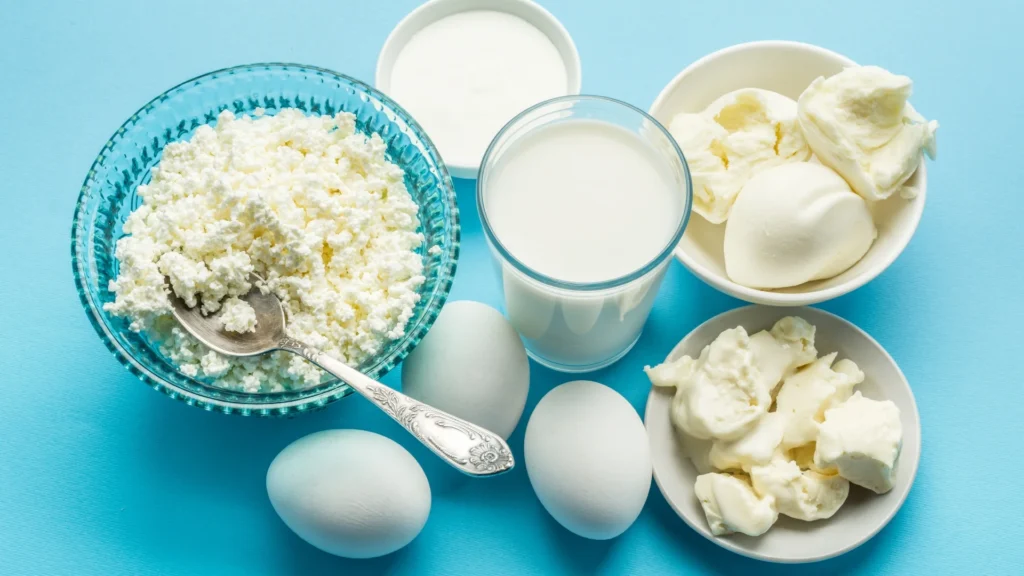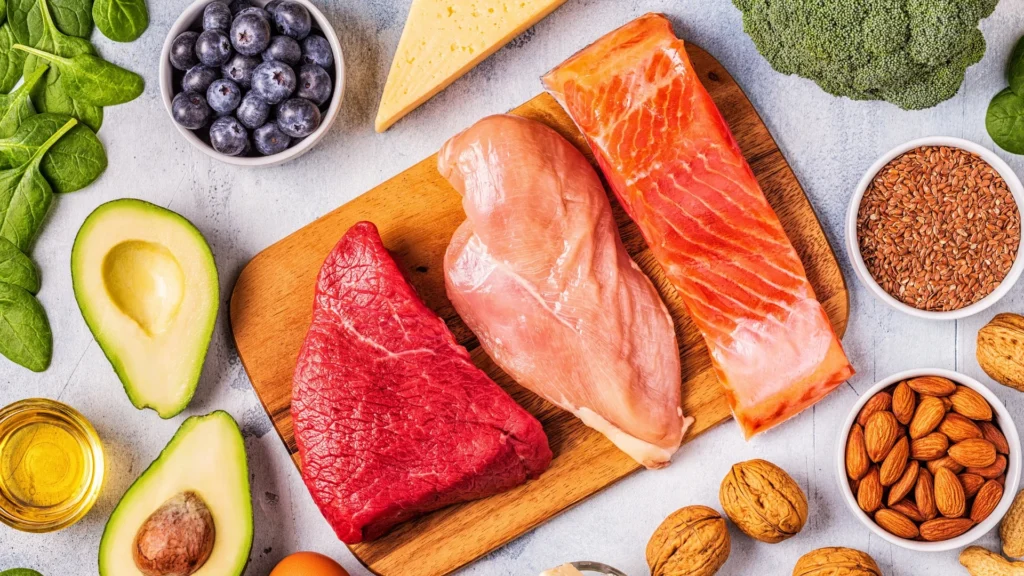Fats. A simple word that often stirs complex emotions. They’ve been vilified in diet culture and lauded in culinary circles. But what’s the real story? Is fat a friend or foe? Understanding the facts about fats is more than just a matter of diet—it’s about understanding a crucial aspect of our health.
In this article, we’re setting the record straight. We’re diving deep into the world of fats, exploring its various aspects, and revealing facts that might surprise you.
Fact 1: Fats are Essential for Our Body

When it comes to maintaining a healthy body, fats play an indispensable role. One of the primary functions of fats is serving as an energy reserve for our body. While carbohydrates provide immediate energy, fats step up when these reserves deplete. This is especially crucial during physical activities like running or swimming where endurance is key.
“Did you know that each gram of fat provides more than twice the amount of energy compared to proteins and carbohydrates?”
In addition to being an excellent energy source, fats also aid in absorbing essential vitamins. Certain vitamins like A, D, E, and K — collectively known as fat-soluble vitamins — require fat for proper absorption into our body. These vitamins contribute to numerous bodily functions such as:
- Vision (Vitamin A)
- Bone health (Vitamin D)
- Antioxidant activity (Vitamin E)
- Blood clotting (Vitamin K)
Without sufficient fat intake, our bodies might not absorb these vitamins effectively, potentially leading to vitamin deficiencies.
Fats aren’t just about adding flavor to your meals or contributing to unwanted weight gain. They serve critical roles in providing us with energy and facilitating vitamin absorption. So next time you think about skipping out on fats in your diet, remember their essential contribution to your well-being.
Fact 2: Not All Fats are Bad – The Good vs Bad Fat Myth

Fats often get a bad reputation, but it’s important to remember that not all fats are created equal. There are, in fact, four distinct types of fats:
- Saturated fat
- Monounsaturated fat
- Polyunsaturated fat
- Trans fat
Saturated fats mainly come from animal sources like meat and dairy products. They tend to raise the level of cholesterol in your blood, increasing your risk of heart disease.
On the other hand, monounsaturated fats and polyunsaturated fats are generally considered beneficial for health. These fats, found in foods like avocados, fish, nuts, and seeds, can help reduce bad cholesterol levels and provide nutrients to help develop and maintain your body’s cells.
Did you know? Monounsaturated fats also lower total and LDL (bad) cholesterol levels.
Polyunsaturated fats, including omega-3 and omega-6 fatty acids, reduce blood clotting and hardening of arteries. They’re typically found in fatty fishes like salmon and mackerel as well as flaxseed oil.
Lastly, trans fats represent the most harmful category. They not only raise your bad (LDL) cholesterol levels but also lower your good (HDL) cholesterol levels, increasing your risk of heart disease. Trans fats are commonly found in processed foods.
As we navigate through the world of fats, it’s clear that they’re not all villains in our diet story. Understanding these differences between various types of fats is the first step towards making healthier dietary choices.
Fact 3: How Choosing the Right Fats Can Keep Your Heart Healthy

When it comes to heart health, not all fats are created equal. Saturated fats and trans fats have been linked to an increased risk of heart disease. These types of fats can affect blood lipid levels negatively by raising low-density lipoprotein (LDL) cholesterol—often referred to as the “bad” cholesterol.
- Saturated fats are found in foods like fatty cuts of meat, full-fat dairy products, butter, and certain oils such as palm and coconut oil.
- Trans fats, on the other hand, are often present in processed foods, baked goods, and some margarines. They are created through a process called hydrogenation, which makes oils more solid at room temperature.
The impact these fats have on heart health is significant:
- Saturated fats can elevate total cholesterol levels and tip the balance toward more harmful LDL cholesterol.
- Trans fats not only raise LDL cholesterol but also lower high-density lipoprotein (HDL) cholesterol, which is known as the “good” cholesterol and helps to clear cholesterol from your arteries.
By contrast, replacing these less healthy fats with unsaturated fats—such as those found in fish, nuts, seeds, avocados, and vegetable oils—can help reduce LDL cholesterol levels and may contribute to a lower risk of heart disease. It’s about making smart choices; for example:
- Opt for grilling or baking instead of frying.
- Choose lean protein sources or plant-based alternatives.
- Select dairy products that are low in fat.
Making these adjustments aligns with dietary guidelines promoting heart health without sacrificing flavor or nutrition.
Fact 4: The Role of Fats in Brain Development and Function

Have you ever wondered why pediatricians often recommend a balanced diet rich in fats for children? That’s because certain types of fats, especially Omega-3 fatty acids, play a crucial role in the development and functioning of the brain.
Omega-3 fatty acids are a type of polyunsaturated fat, found abundantly in foods like fish, flaxseeds, and walnuts. Not only do they contribute to the structural integrity of brain cells, but also enhance communication between neurons. This ensures optimal cognitive function and supports mental well-being.
Importance of Omega-3 Fatty Acids at Different Stages of Life
1. During Fetal Brain Development
- Vital for healthy brain development
- Deficiency during pregnancy increases the risk of vision and nerve problems in infants
2. During Childhood and Adolescence
- Essential for learning and memory
- Supports the rapid growth and development of the brain during this period
3. In Adulthood
- Necessary for maintaining brain health
- Insufficient intake may contribute to conditions like depression and cognitive decline later in life
Including Omega-3 Fats in Your Diet
Research has shown that these fats are vital during fetal brain development. Infants who do not get enough Omega-3 fatty acids from their mothers during pregnancy are at risk for developing vision and nerve problems.
Similarly, during childhood and adolescence – when the brain undergoes rapid growth – an adequate supply of these fats is necessary for learning and memory.
But it’s not only about the young ones! Even as adults, our brains need Omega-3 fatty acids. Lack of these essential fats may lead to conditions such as depression and cognitive decline in later life.
So the next time you’re planning your meals or shopping for groceries, remember to include some Omega-3 rich foods for brain health.
Fact 5: The Low-Fat Diet Craze and Why It’s Time to Rethink It

The past few decades have witnessed a surge in the Low-Fat Diet Trend. Fats were demonized, and low-fat diets were promoted as the ticket to weight loss. But did this approach deliver on its promises? Let’s dive deeper into this.
The Flawed Logic of Low-Fat Diets
The principal idea behind these diets was simple: reduce fat intake, decrease calorie consumption, and thereby lose weight. However, this isn’t quite as straightforward as it seems. Calories from fats are not the sole determinant of weight gain or loss. The type of calories – whether they come from fats, proteins, or carbohydrates – also plays a significant role.
The Pitfalls of Low-Fat Diets
When people embraced low-fat diets, they often replaced fats with refined carbohydrates and sugars. These substitutes can provoke rapid spikes in blood sugar and insulin levels, leading to increased hunger and potentially weight gain.
The Truth About Fats and Weight Loss
Research shows that low-fat diets do not have a substantial advantage over other types of diet for long-term weight loss. In fact, diets higher in healthy fats (like monounsaturated and polyunsaturated fats) tend to be more beneficial for overall health.
“So it’s time we rethink the low-fat diet trend. Weight management isn’t just about cutting out an entire nutrient group from our meals. It’s about balancing all nutrients in our diet – including fats.”
Making Healthy Fat Choices Every Day

When it comes to fats, choosing wisely is the key. Embracing a balanced and diverse diet is one crucial factor in maintaining a healthy lifestyle. Incorporating good fats into daily meals does not have to be challenging.
Incorporate Good Fats in a Balanced Diet
The daily intake of fat should account for about 25-30% of the total energy intake, which roughly translates to 55-65g per day in a 2000kcal diet. Prioritize foods rich in unsaturated fats such as avocado, olive oil, fish like salmon and mackerel, and nuts like almonds and walnuts.
Using Healthier Oils for Cooking and Dressings
Cooking oils can significantly influence the type of fats consumed. Oils high in polyunsaturated and monounsaturated fats like olive oil, canola oil, and sunflower oil are healthier choices. Not only are they excellent for cooking but also work wonders in dressings for salads and dips.
Limit Saturated and Trans Fats for Heart Health
It’s not just about adding good fats; it’s equally important to limit bad ones. Saturated and trans fats raise LDL cholesterol levels, increasing heart disease risk. Foods to watch out for include fatty cuts of meat, full-fat dairy products, lard, and anything containing hydrogenated or partially hydrogenated oils.
Practical Tips for Selecting Nutritious Foods That Contain Beneficial Fats
Here are some hands-on tips when shopping for food:
- Read ingredient lists carefully. Avoid products with hydrogenated or partially hydrogenated oils.
- Check nutrition labels for lower total, saturated, and trans fats.
- Choose lean meats over fatty cuts.
- Opt for low-fat dairy products.
- Incorporate fish into your diet at least twice a week.
- Favor skinless poultry and beans over processed meats.
Remember, even good fats are high in calories. So moderation is key. It’s not about removing all fats from the diet but about making smarter choices. The next time you’re at the grocery store, armed with this knowledge, you’ll be making healthier decisions for your body in no time.
Conclusion
Nourishing your body with the right kinds of fats is crucial for overall health, brain function, and disease prevention. Arm yourself with knowledge about the different types of fats and their effects on your body. It’s not about avoiding fats altogether, but rather making informed choices to incorporate beneficial fats into your diet.
Be mindful of your fat consumption and strive for a balanced approach in your diet. It’s a small change that will lead to big benefits for your health.
Read More: Is Organic Food Really Better for You? Find Out Here



